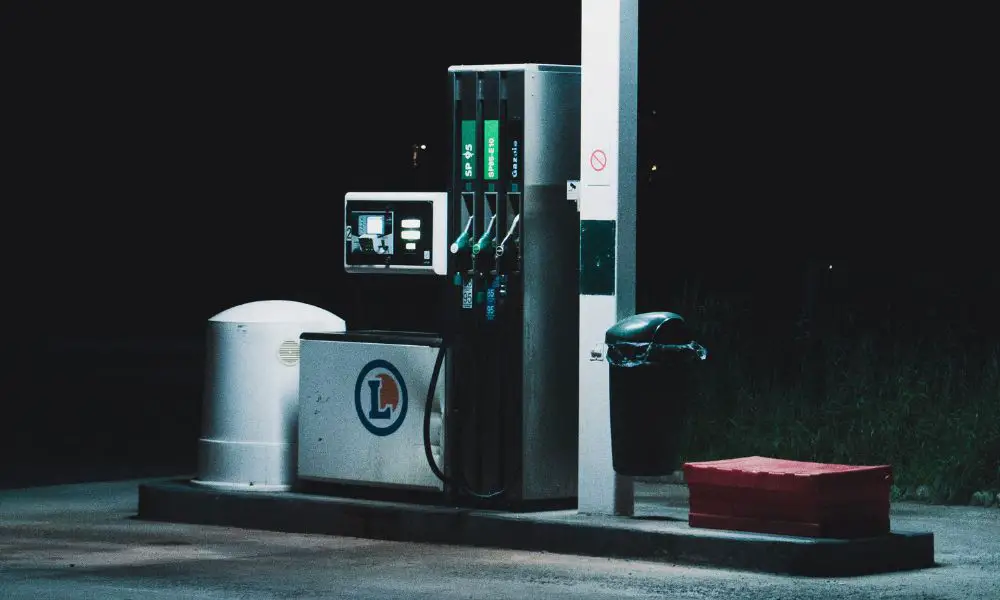You probably have heard of a fuel tank; your car has one (unless you have an EV)! However, the closest cousin of the fuel tank is the fuel cell. However, what is the difference, and why would you want one?
Fuel cells are an off-road use-only aftermarket component that protects drivers from fire hazards by being considerably more puncture and spill-resistant than a fuel tank. Fuel tanks, on the other hand, are custom-made per vehicle, making it possible to distribute weight and give more room for passengers, while keeping weight minimal.
Table of Contents
What is a fuel tank on a car?

A fuel tank is a container that stores fuel in your average car, truck, and SUV. The fuel can be gasoline, diesel, ethanol, or any other fuel used to power an engine.
The fuel tank is usually made of metal and is located on the underside of the vehicle’s rear; however, it can be located anywhere throughout the car, depending on where the manufacturer wants it.
These tanks then supply this fuel to the engine via a fuel pump to allow the engine to run. Fuel tanks, in general, are custom-made for each vehicle that a manufacturer makes.
There can be plenty of odd shapes that allow the tank to wrap or mold around other components in the vehicle. This not only allows for more fuel to be added to the car but can also distribute the weight of the gas throughout the vehicle better.
What is a fuel cell?

Fuel cells are very similar to the fuel tank, containing fuel distributed to the engine. However, that is about where the similarities end!
Fuel cells are an aftermarket component, which is not legal for street use in most places and is not custom-fit to the vehicle.
Instead of a custom build, these are generally rectangular shapes installed in the vehicle’s trunk.
While this may sound counterintuitive, the fuel cell is beefed up with thicker metal and has many other safety features to keep it from leaking fluid or being punctured. This makes a fuel cell perfect for those who go racing on the weekends or are professional drivers!
In these more dangerous conditions, especially in a rollover, you want to ensure that your fuel stays inside its container rather than flowing out and causing a fire.
Why would you want a fuel tank over a fuel cell?
A fuel cell sounds rather great—more puncture-resistant and better in cases of accidents. However, there are better choices for transporting gasoline.
Outside of the fact that fuel cells are illegal on roads, they take up a ton of room, are expensive, and aren’t practical for everyday usage.
Today, fuel tanks have been built to be protected for everyday use on roads, which is not something you should worry too much about! This means for 99.9% of people, a fuel tank will be the best and most reliable choice for them.
Frequently Asked Questions
Are fuel cells legal for streets?
One of the most significant downsides to fuel cells is that they are not legal on most streets today! Fuel cells don’t have any regulations surrounding them, meaning they can be installed or mounted in any way, and this can be dangerous to other cars on the road in the case of an accident.
Do you need to vent a fuel cell?
Fuel tanks and fuel cells should all have the capability to vent. This releases extra pressure and fumes from the fuel tank that you would not want in the tank.
Should my gas tank be pressurized?
All fuel tanks should be pressurized to allow for proper functionality in moving gasoline throughout the vehicle. This is why your check engine light turns on if your gas cap is damaged, as it affects the pressurization of your gas tank.
Conclusion
Fuel tanks and fuel cells are both storage places for fuel, but the similarities end there. A fuel tank is a custom-fit part of your car that you will never even know is there, whereas a fuel cell is an aftermarket component that takes up space and is not legal for street use in most places.
Fuel cells are great for those who do a lot of racing, as they are more puncture-resistant and have other safety features. However, fuel tanks are better for everyday use because they are legal, easier to install, and don’t take up as much space inside the car.





